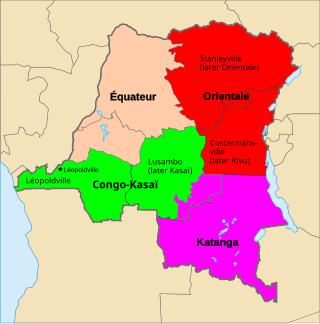
Katanga was one of the four large provinces created in the Belgian Congo in 1914. It was one of the eleven provinces of the Democratic Republic of the Congo between 1966 and 2015, when it was split into the Tanganyika, Haut-Lomami, Lualaba, and Haut-Katanga provinces. Between 1971 and 1997, its official name was Shaba Province.
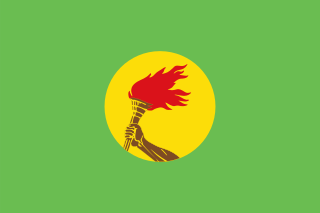
Zaire, officially the Republic of Zaire, was the name of the Democratic Republic of the Congo from 1971 to 1997. Zaire was located in Central Africa and was, by area, the third-largest country in Africa, and the 11th-largest country in the world. With a population of over 23 million inhabitants, Zaire was the most populous officially Francophone country in Africa, as well as one of the most populous in Africa.
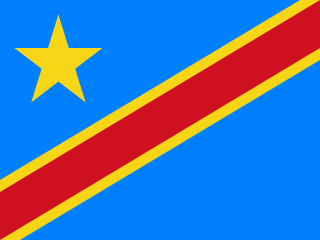
The Democratic Republic of the Congo is a country in Central Africa. By land area, the DRC is the second-largest country in Africa and the 11th-largest in the world. With a population of around 112 million, the Democratic Republic of the Congo is the most populous Francophone country in the world. The national capital and largest city is Kinshasa, which is also the economic center. The country is bordered by the Republic of the Congo, Central African Republic, South Sudan, Uganda, Rwanda, Burundi, Tanzania, Zambia, Angola, the Cabinda exclave of Angola, and the South Atlantic Ocean.

Lubumbashi is the second-largest city in the Democratic Republic of the Congo, located in the country's southeasternmost part, along the border with Zambia. The capital and principal city of the Haut-Katanga Province, Lubumbashi is the center of mining in the region, acting as a hub for many of the country's largest mining companies. No definite population figures are available, but the population of the city's urban area is estimated to be around 2,584,000 in 2021.

Mbuji-Mayi or Mbujimayi is a city and the capital of Kasai-Oriental Province in the south-central Democratic Republic of Congo. It is thought to be the second largest city in the country, after the capital Kinshasa and ahead of Lubumbashi, Kisangani and Kananga, though its exact population is not known. Estimates range from a 2010 CIA World Factbook estimated population of 1,480,000 to as many as 3,500,000 estimated by the United Nations in 2008.
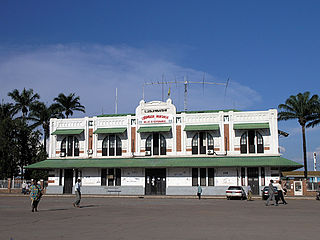
The Société Nationale des chemins de fer du Congo is the national railway company for the inland railways of the Democratic Republic of the Congo.
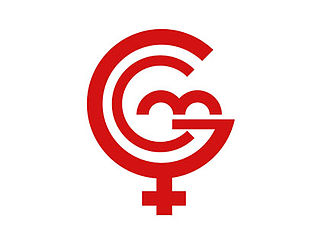
La Générale des Carrières et des Mines (Gécamines) is a Congolese commodity trading and mining company headquartered in Lubumbashi, in the Katanga region of the Democratic Republic of Congo. It is a state-controlled corporation founded in 1966 and a successor to the Union Minière du Haut-Katanga. Gecamines is engaged in the exploration, research, exploitation and production of mineral deposits including copper and cobalt.
Dr. Urbain Kisula Ngoy (1940—2018) was a Congolese politician and doctor who served as governor of the Katanga Province, Democratic Republic of the Congo, from 2004 to 2007. During his time in office, he sought to end the Mai-Mai's abuse of Katanga.

Comazar is a company that operates railways in Africa. Its stock is majority owned by the French investment group Bolloré. Comazar was founded by Eric Peiffer and Patrick Claes in conjunction with Transnet (Spoornet) and Transurb Consult in 1995.
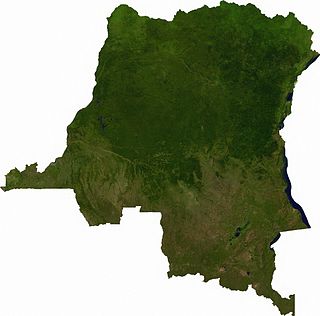
Articles related to the Democratic Republic of the Congo include:

Rail transport is provided in the Democratic Republic of the Congo by the Société Nationale des Chemins de Fer du Congo (SNCC), the Société commerciale des transports et des ports (SCTP) (previously Office National des Transports until 2011), and the Office des Chemins de fer des Ueles (CFU).

The Société Nationale des Chemins de Fer Zaïrois (SNCZ) was the state railway company in Zaire formed in 1974 by combining several privately owned railways. It suffered from lack of maintenance of the tracks and rolling stock, weak management, and external factors such as the Angolan Civil War and the collapse of the economy of Zaire under President Mobutu Sese Seko. Despite two projects funded by the World Bank, it had virtually ceased to function by the 1990s. It was replaced in 1995 by the short-lived private company SIZARAIL, which in turn was replaced by the present Société nationale des chemins de fer du Congo.
Copper mining in the Democratic Republic of the Congo mainly takes place in the Copper Belt of the southern Katanga Province of the Democratic Republic of the Congo.
Luishia mine was an open pit copper and cobalt mine in Katanga Province, Democratic Republic of the Congo. A concession to the south of the mine has recently been opened to exploitation.

The People's Palace or Palace of the People is the seat of the National Assembly and the Senate in Kinshasa, Democratic Republic of Congo, formerly Zaire. It was completed in 1979 with a line of credit from the People's Republic of China. It has witnessed key moments in the country's political landscape, bearing witness to historic debates, legislative triumphs, and the exercise of democratic values. The building serves as a gathering place for lawmakers and a venue for official ceremonies.
This is a list of Chiefs of Staff of the armed forces of the Democratic Republic of the Congo and Zaire.
The following is a timeline of the history of the city of Lubumbashi, Democratic Republic of the Congo.
The following lists events that happened during 1997 in Zaire.
The following lists events that happened during 1974 in Zaire.

The Battle of Kisangani took place in March 1997 during the First Congo War. The rebels of the Alliance of Democratic Forces for the Liberation of Congo (AFDL), supported by the Rwandan Patriotic Front, took the city defended by the Zairian Armed Forces (FAZ) which was loyal to President Mobutu Sese Seko.













